Crash test of electric lamps at low temperatures (up to -145 degrees Celsius)

In the laboratory of the GTV channel, we tested electric lamps at low temperatures and today we completed the installation of the plot. For testing, a temperature range from 0 ° C to -145 ° C was available to us and it was achieved by supplying liquid and gaseous nitrogen to the heat chamber. The temperature was controlled by passing nitrogen through the evaporator. This is something like a radiator, but unlike the classic purpose, ours did not cool, but heated the gas passing through it at room temperature.
The entire test can be viewed in the video. The video is all the most obvious.
The following lamps were selected for testing.
- LED lamp;
- halogen lamp;
- incandescent lamp;
- fluorescent lamp (popularly referred to as "energy-saving").

The test results are entered in the table.
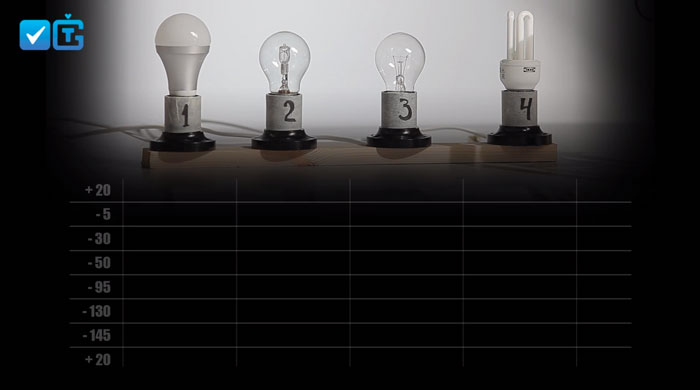
Lamps generate heat
During the experiment, we allowed the lamps to equalize their temperature with the temperature inside the box. To do this, we periodically turned them off briefly.
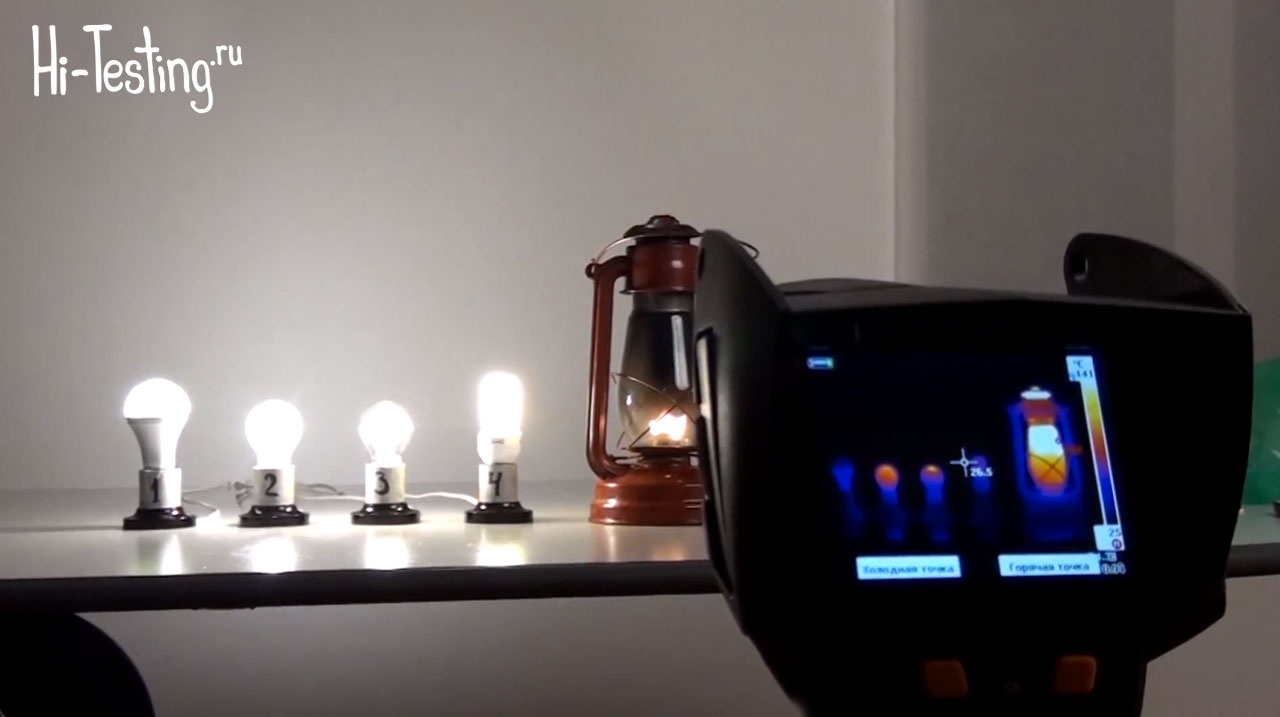
Of all the electric lamps, the incandescent lamp was the most heated, followed by the halogen one. As expected, the LED lamp almost did not produce heat. Well, the kerosene, which we took just for the beauty of the picture, was the leader in heating.

Testing process
The test began with a minus temperature of -5 ° C. All the lamps worked properly and did not show any signs of spleen.
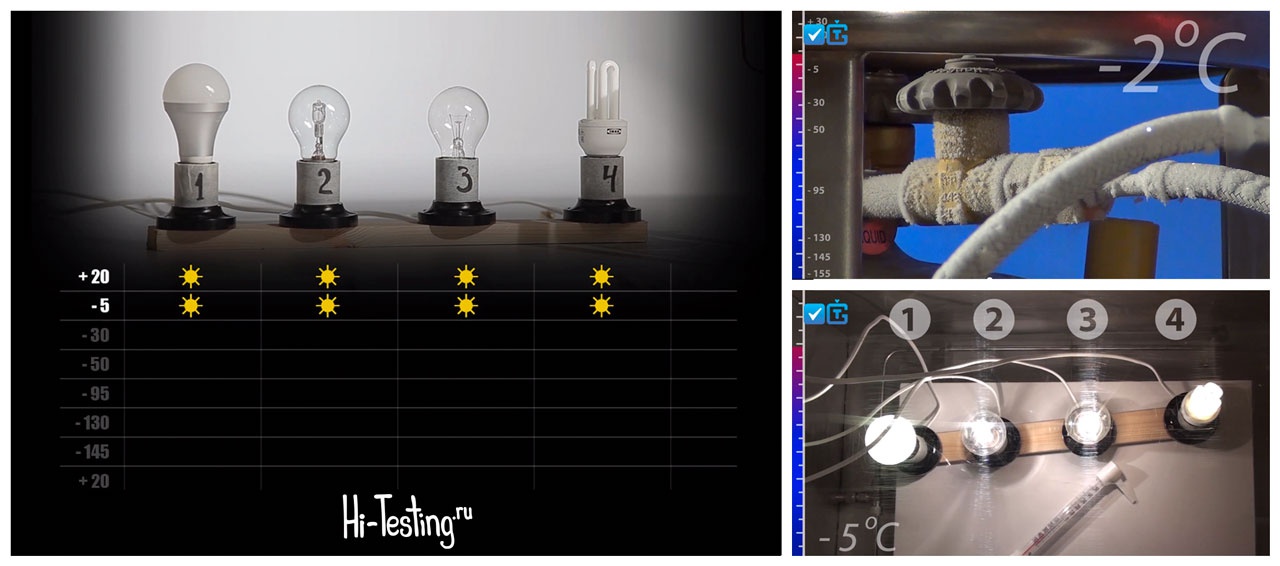
At -30 ° C, it became apparent that something was wrong with the fluorescent lamp. She lost in brightness and began to shine with a yellowish light.
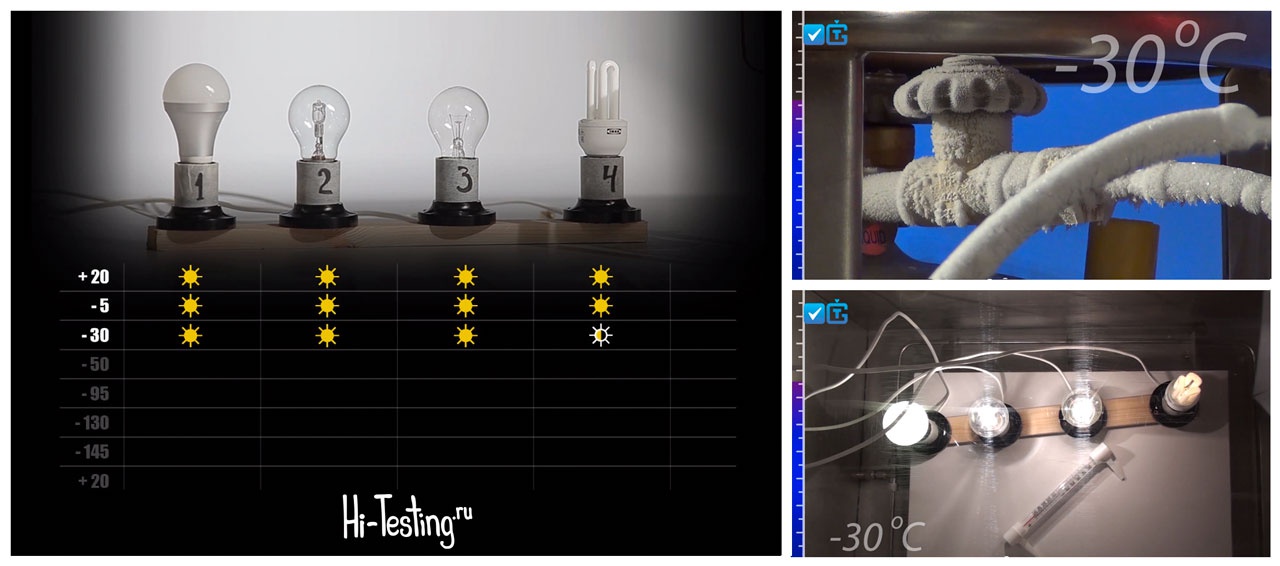
Minus 50 Celsius finally knocked out the soil from under the feet of an energy-saving lamp: it faded thoroughly and began to shine already in red.
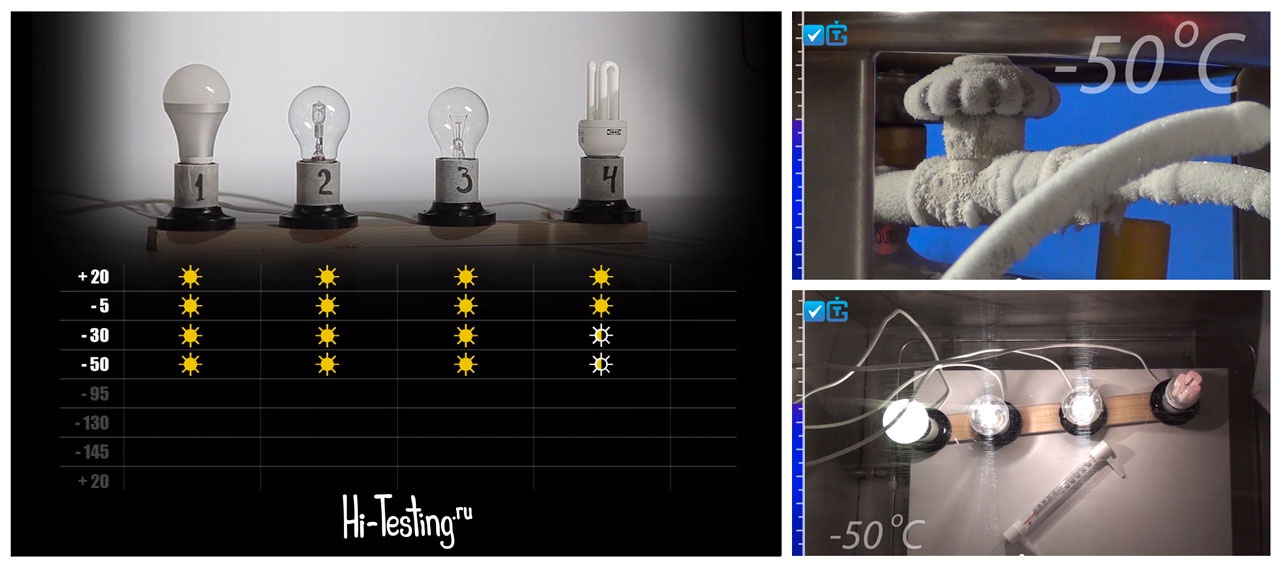
Well, a temperature of -95 ° C and turning it off for 3 minutes turned out to be unbearable for fluorescent and LED lamps. The latter could not even start, apparently summed up the startup scheme.

On the seemingly finish line at -130 ° C, after another shutdown, the filament in the halogen lamp burned out.
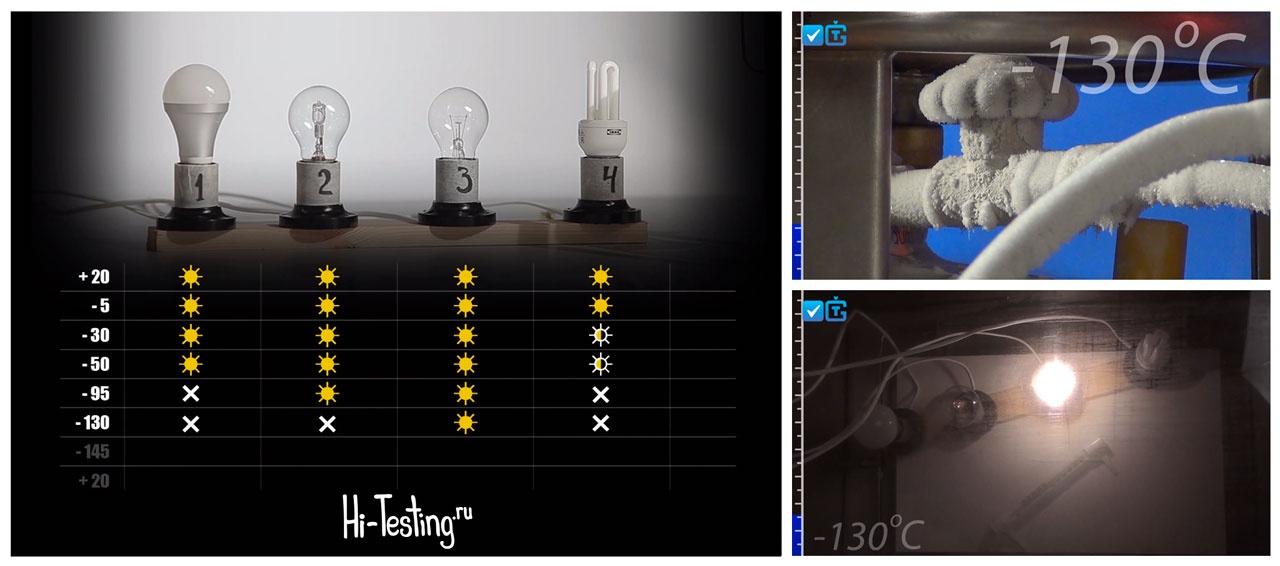
And as you can see, an incandescent lamp confidently withstands a temperature of -145 degrees Celsius.
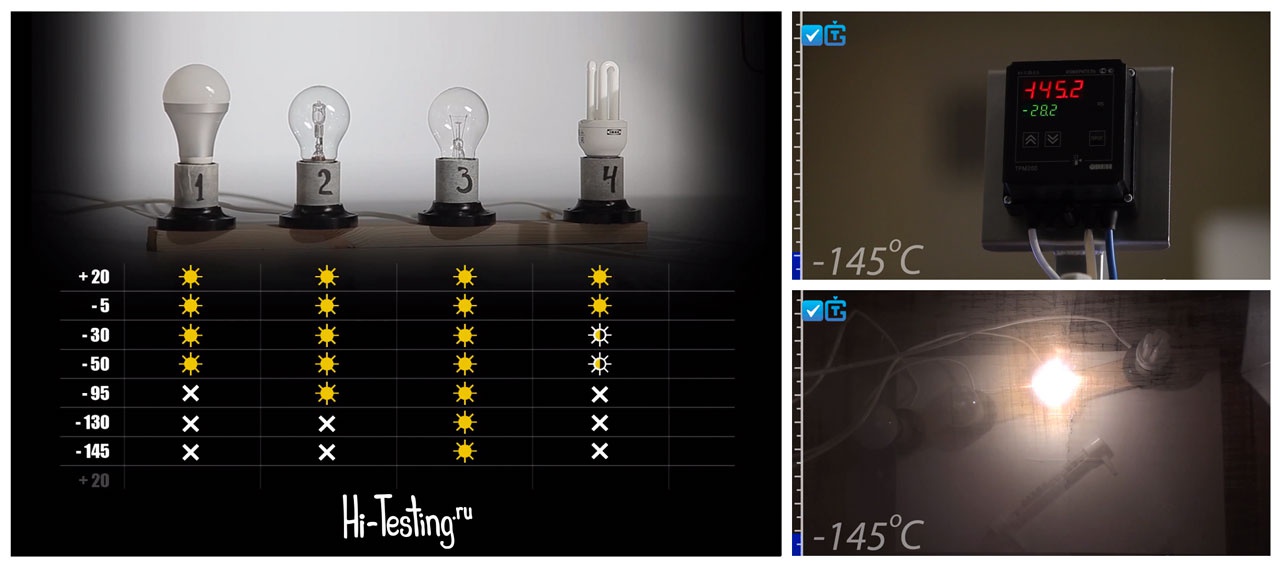
Test completed
After all the lamps were removed from the heat chamber to room temperature, condensation began to precipitate sharply on them. But this did not break the spirit of "Ilyich’s bulb". But the fluorescent lamp, after a few minutes of being warm, worked and its color temperature began to return to normal again.
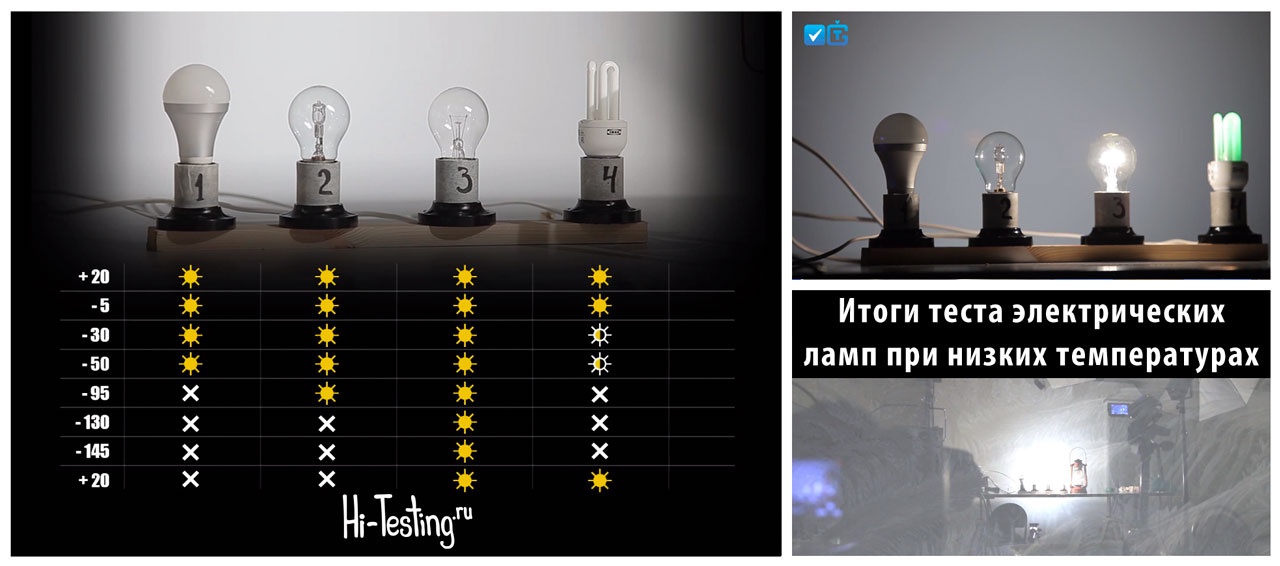
The following photo shows that the halogen lamp really damaged the filament.
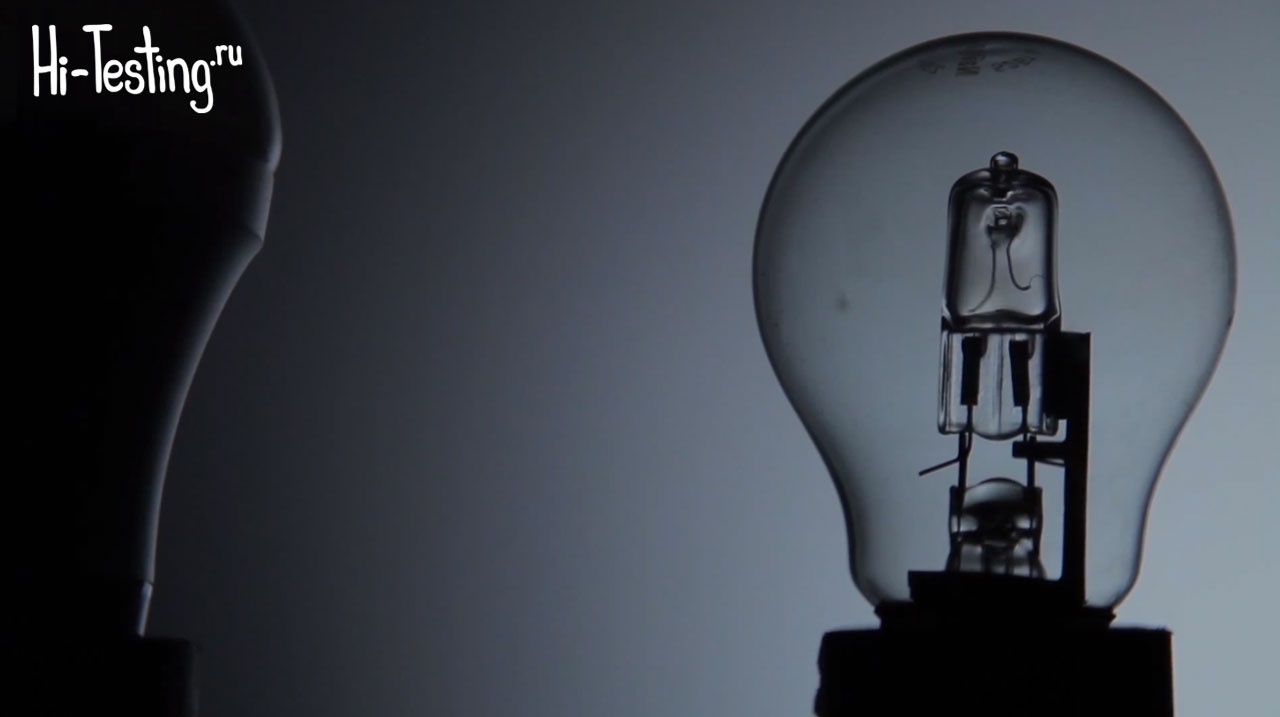
Everyone can draw conclusions for himself, but we only remembered one wisdom: "The old horse will not spoil the furrow."
We will be happy for subscribing to the HI-TESTING VKontakte . And you can follow new tests and experiments on the channel website.
